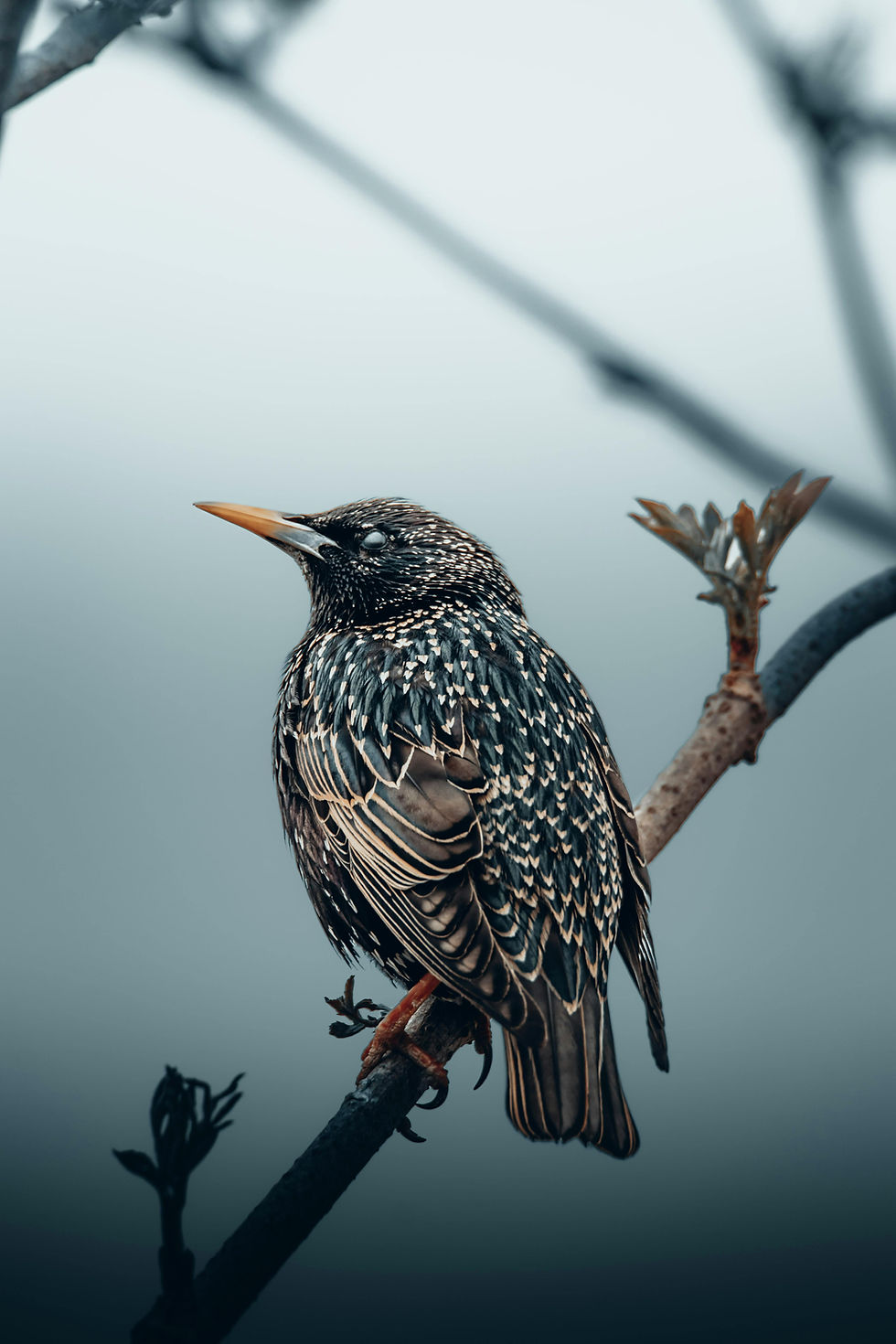Eye of the Beholder
- Rev. Ian Lynch

- Aug 20
- 2 min read

I am black and beautiful, O daughters of Jerusalem, like the tents of Kedar, like the curtains of Solomon. ~ Song of Songs 1:5
One blessing of being simply a backyard birder is the ability to look at newly arrived black bird in the spring and wonder if it is a Grackle or Starling. The former is definitely more showy with its sleek, iridescent sheen and graceful shape, the latter is a flat black, a bit squatty, and frankly, a nuisance. But that is the judgment of a hardcore birder, clearly biased by the abundance and behavior of Starlings. But allow me to share the origin story of the Starling in North America and you can judge for yourself.
As their name implies, the European Starling is a non-native species. There were none in North America prior to 1890, when a German immigrant named Eugene Schieffelin decided it would be a great idea to release 60 of them in New York’s Central Park. And what would motivate such a curious and risky action? These words of Hotspur about Henry IV, “"Nay, I'll have a starling shall be taught to speak nothing but Mortimer, and give it to him to keep his anger still in motion." Or at least in the imagination of William Shakespeare. Because of this reference, Starlings joined the list of birds that would be released here to celebrate the great bard. Most of them fell victim to the harsh climate on this side of the pond, but not the rugged, ruthless Starling. They have exploited their new surroundings to the point that there is no state where they are not found, and they are plentiful everywhere, often becoming more than a simple annoyance. Starlings cost US agriculture an estimated $1 billion a year in damage to crops—particularly fruit trees!
If I am being honest, they a pretty bird, I just can’t see them apart from their behavior. I suspect that we all have our own particular prejudices and preferences that color our assessments of appearances. Thus the expression, “beauty is in the eye of the beholder.” It is rare that our biases are obvious. Take the verse from the Song of Songs where the Shulamite speaks of her dark skin. English translators have a choice between “but” or “and” when she says “I am black and beautiful.” Yes, that is a more recent translation, most older ones read “but.” Isn’t it more correct to say that beauty is inherent in all of creation, but too often missed by the beholder?
Prayer: Beauty-maker, could you hold the mirror while we take these planks out of our eyes? Amen.

























Comments